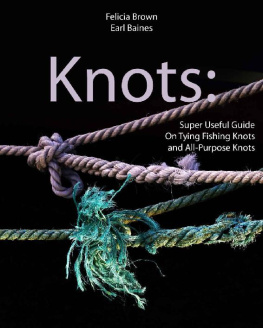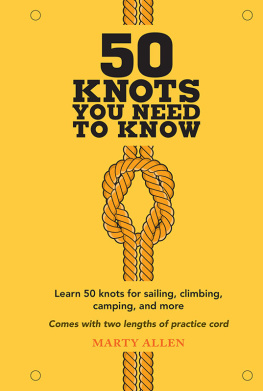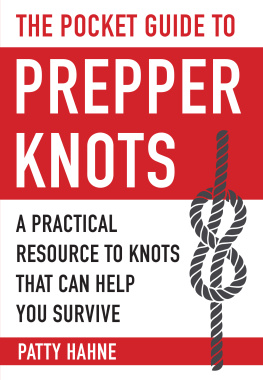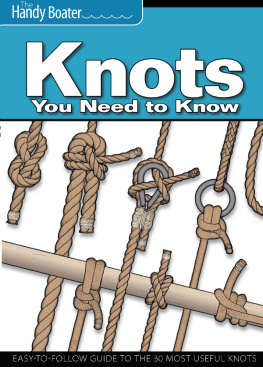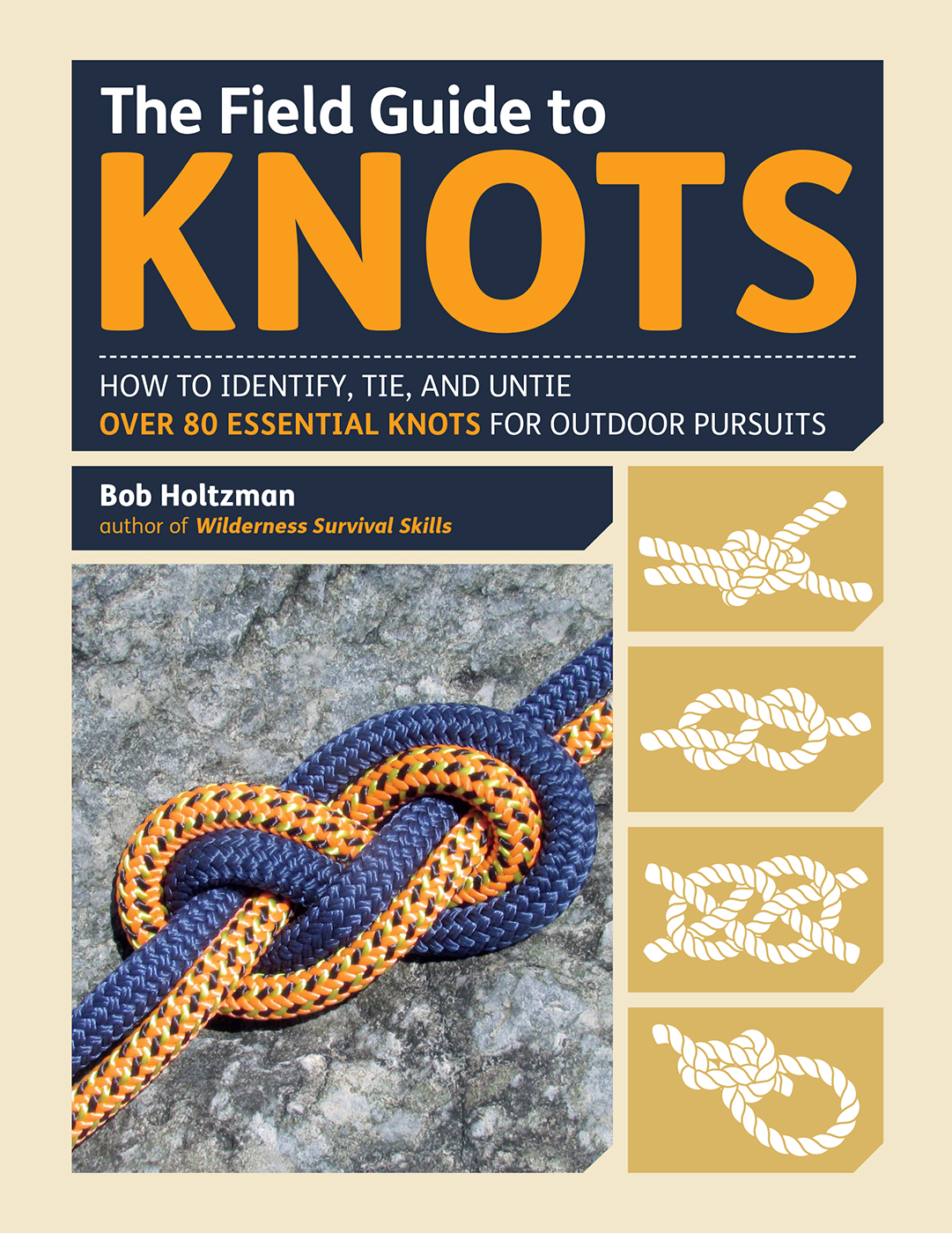THE FIELD GUIDE TO KNOTS: How to Identify, Tie, and Untie Over 80 Essential Knots for Outdoor Pursuits
Copyright 2015 Quid Publishing
All rights reserved. Except for brief passages quoted in newspaper, magazine, radio, television, or online reviews, no portion of this book may be reproduced, distributed, or transmitted in any form or by any means, electronic or mechanical, including photocopying, recording, or information storage or retrieval system, without the prior written permission of the publisher.
Many of the designations used by manufacturers and sellers to distinguish their products are claimed as trademarks. Where those designations appear in this book and The Experiment was aware of a trademark claim, the designations have been capitalized.
The Experiment, LLC, 220 East 23rd Street, Suite 301, New York, NY 10010-4674, www.theexperimentpublishing.com
The Experiments books are available at special discounts when purchased in bulk for premiums and sales promotions as well as for fund-raising or educational use. For details, contact us at .
Digital edition: 978-1-61519-277-9
Softcover edition: 978-1-61519-276-2
Library of Congress Cataloging-in-Publication Data
Holtzman, Bob.
The field guide to knots : how to identify, tie, and untie over 80 essential knots for outdoor pursuits / Bob Holtzman.
pages cm
Includes index.
ISBN 978-1-61519-276-2 (hardcover) -- ISBN 978-1-61519-277-9 (ebook)
1. Knots and splices--Handbooks, manuals, etc. I. Title.
VM533.H64 2015
623.8882--dc23
2015019181
Conceived, designed, and produced by, Quid Publishing, Part of the Quarto Group, Level 4 Sheridan House, 114 Western Road, Hove BN3 1DD - www.quidpublishing.com Design by Rehab
Knots on front cover are, clockwise from left: Flemish Bend, Sheet Bend, Figure 8 Knot, Carrick Bend, and Bowline.
Knots on back cover are, from top down: Cleat Hitch, Slipped Half Hitch, Alpine Coil, Mooring Hitch.
Main cover image Bob Holtzman; icons Shutterstock; back cover images Feather Weight
Distributed by Workman Publishing Company, Inc.
Distributed simultaneously in Canada by Thomas Allen & Son Ltd.
This ones for the Maine Canoe Symposium, the Penobscot Paddle & Chowder Society, and all my canoeing friends
B.H.
Acknowledgments
Thanks for the loans of various materials, and for suggestions of helpful knots, to: Sandie and Brendan Sabaka; Tim Barker and Ed Eaton of Maine Sport; and Shawn Burke. Rachel Styer of Feather Weight did a great job shooting the massive photography program and keeping it organized, and was a pleasure to work with. Plus scones. Cant forget the scones.
The Field Guide to
KNOTS
HOW TO IDENTIFY, TIE, AND UNTIE OVER 80 ESSENTIAL KNOTS FOR OUTDOOR PURSUITS
Bob Holtzman
author of Wilderness Survival Skills

Contents
Guide
Introduction
Why This Knot Book?
Knot tying is an essential outdoor skill. Knots are indispensible to backpackers, climbers, boaters, and anglers. And anyone who spends time in the backcountryincluding day hikers, birdwatchers, hunters, cross-country skiers, snowshoers, equestrians, and mountain bikersshould have basic knot-tying skills for everyday and emergency situations. And really, just about everyone has to tie stuff up on occasion, and doing it right makes the job quicker, easier, neater, and safer.
But there are already a lot of knot books out there, so what makes this one different? Three things:
Its designed to allow you to identify most functional knots youre likely to encounter in outdoor activities. Thats what makes the book a field guide.
The book explains how to untie each knot. Thats more important than it may seem. Whether you need to change a sail, reposition a loop on a climbing rope, tighten a sagging dining fly, or splice a broken tent pole, untying knots is often the first step. Doing it correctly will make the job go faster and may reduce damage to the rope.
It provides an efficient way to select the right knot for any job. Rather than making you read lengthy descriptions of dozens of knots to find one thats appropriate, this book provides a quick overview of every knot at the beginning of each part, so you can quickly zero in on the one that best suits your needs.
Of course, the book explains how to tie the knots and includes alternate methods for a few of them. It also gives you the information you need to select the right kind of rope and it explains how to use it efficiently, and how to keep it in good condition. Good rope is expensive, and if youre using it in situations where personal safety is at stake, you want to know you can depend on it.
How to Use This Book
Just as a field guide to birds is organized by categories (wading birds, perching birds, hawks, etc.), the knots in this book are organized into categories. Whether you need to untie an existing knot or select a new knot for a job, the way to begin is to identify the knot or define your requirement by general typebinding knots, hitches, loop knots, etc.and then narrow the search to the specific knot. Under you will find information about the main categories of knots and what theyre used for.
Once you know the category of knot youre looking at, or that you need to tie, turn to the part of the book that covers that category in detail. Each part begins with an identification key, consisting of photographs of every knot in the category, accompanied by a brief list of the knots common uses. You will also find pro-and-con comments that compare a given knot to others in the category, in terms of security, ease of tying or untying, and other need-to-know information. Each photo is keyed to the page where tying and untying instructions are found, along with a more detailed description of the knot and its uses.
Like any other skill, knotting has special terminology, but the lexicon is pretty small and easily learned. It is much easier to read and follow instructions that use precise, concise terms rather than long descriptions.
So be sure to read the first two sections of . As soon as you begin tying your first knots, these terms will all become familiar friends.
Knowing how to tie the right knot for every job is a usefulsometimes essentialoutdoor skill. But its also fun, gratifying, and very impressive when you can quickly rig a safety line for a climber, lash a canoe onto a car, or put up a tarp that stays up while others are struggling and flailing with tangled lines and knots that dont hold. Start by learning just a few knots in each category, and you may find yourself coming back for more.
What Knots Are Included?
Of literally thousands of knots and similar ropework devices known for many purposes, there are 87 (including variations) in this book. How did we decide which to include? Well, this is a practical guide for outdoors enthusiasts, and the knots here are practical in the sense that each of them work well for a number of outdoor situations, and theyre relatively easy to learn, tie, and remember.


